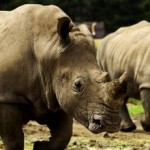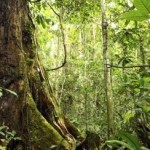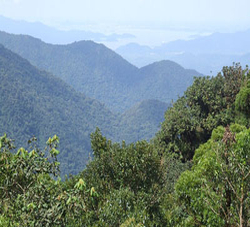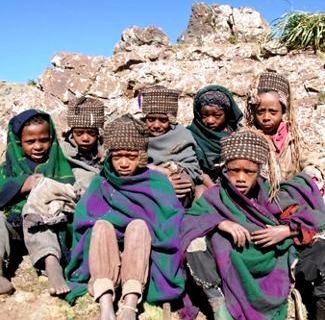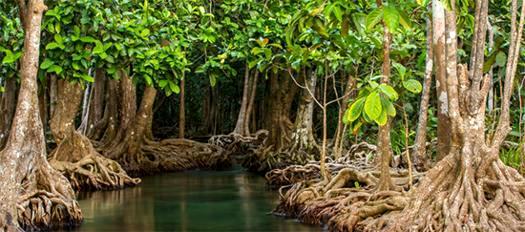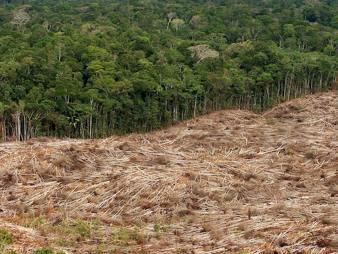
College Park, Maryland – Hopeful signs that humans and tigers can coexist are emerging in rural Nepal, where the government has committed to doubling populations of the critically endangered big cat by 2022. A new study by conservation scientist Neil Carter, a postdoctoral research fellow at the National Socio-Environmental Synthesis Center (SESYNC) at the University of Maryland, provides evidence that when Nepalese villagers are empowered to make some local land management decisions, the resulting landscape changes can benefit both people and tigers.
Few wildlife species face more potential conflicts with humankind than tigers, which require large areas for hunting and raising their young, and inhabit some of the most densely populated regions of the world. Worldwide tiger populations have plummeted, from an estimated 100,000 worldwide at the beginning of the 20th century to perhaps as few as 3,000 remaining in the wild.
Carter studies the interactions between humans and tigers in Nepal’s Chitwan National Park and its environs. In the latest research, Carter and his colleagues showed that in areas near the national park border where local people were permitted to harvest some of the natural resources they needed, such as timber and grass, the amount of tigers’ preferred type of habitat increased. Within the park, where local resource harvests are prohibited, the amount of highly suitable habitat for tigers declined – perhaps due to illegal harvests.
A scientific paper based on the research, which Carter led while working on his doctoral degree at Michigan State University, was published online October 18 in the journal Ecosphere.
Chitwan National Park was established in 1973 to protect tigers and other keystones of the area’s biodiversity, but it has had significant costs for people living in the area. Residents depend on the forest for wood as fuel and building material, and rely on local grasses to thatch roofs and feed their livestock. The policies governing the park are top-down, with little input from residents, Carter said.
Recognizing the potential for resource conflicts, in 1996 the Nepalese government added a buffer zone next to the park, where people have more access to the forest’s resources and more say in its management.
“Many animals have their ranges extending outside of protected areas,” Carter said. “They don’t know and they don’t care where the border signs are. So areas outside protected areas are important as well.”
To find out how the creation and management of the buffer zones affected tigers, the researchers used camera traps – motion-sensitive cameras mounted along animal trails – that snapped photos of 17 different adult tigers at sites inside the park and in the buffer zone.
They also used satellite imagery to develop detailed maps of the local land cover, including forests, grasslands, and bare ground. By superimposing their photographic evidence of tiger movements onto the land cover maps, the researchers showed that tigers have a distinct preference for grasslands near water, which flow unbroken into nearby swaths of forest or grassy cover. That’s probably because the grasslands and water attract animals for tigers to prey on, the grasses conceal them while they hunt, and the connected patches of habitat accommodate the big cats’ need for relatively large home territories.
Finally, the researchers used satellite photos taken between 1989 and 2009 to track changes in land cover inside and outside the park, and compare it to the habitat that tigers prefer. Throughout that 20-year span, they found, the park offered more habitat suitable for tigers than the buffer lands did. But the amount of good tiger habitat in the park declined between 1999 and 2009.
Meanwhile tiger habitat outside the park took a turn for the better. From 1989 to 1999, tiger habitat suitability outside the park was relatively constant. But from 1999 to 2009, the suitability of tiger habitat increased in the area between human settlements and the park boundary. The tiger habitat gains happened after the buffer zone was created and local people gained some control over land uses outside the park, the researchers noted.
“In Nepal, we’re finding that there is this middle ground where you can have people using the land and still not only keep land from degrading, but can improve habitat quality,” said Carter. “Policies in Chitwan’s buffer zone, such as prohibiting livestock from freely grazing in the forests and community-based forest management, improved habitat quality.”
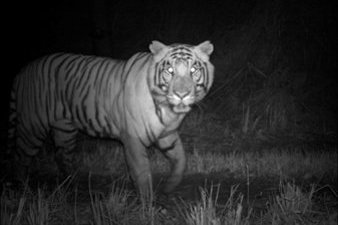
In July 2013, the Nepalese government announced the nation’s tiger population had jumped 63 percent in four years, with an estimated 198 tigers now living in the wild – many of them in and around Chitwan National Park. The government cited habitat improvements and a decline in poaching as possible reasons for the apparent population increase.
“Park managers are doing a tremendous job of conserving tigers and their habitat in the face of relentless pressure from the human population,” agreed Carter, who has worked in the area since 2008. By helping to meet villagers’ urgent need for basic resources, the buffer zones make park managers’ daunting task more achievable, he said.



